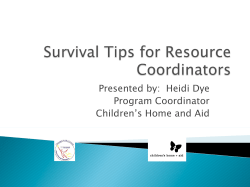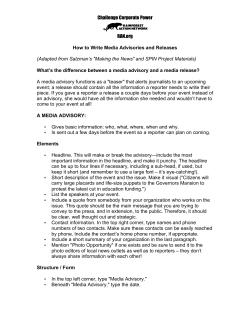
Can’t Read, Won’t Buy: Why Language Matters
Global Dataset™ Can’t Read, Won’t Buy: Why Language Matters on Global Websites An International Survey of Global Consumer Buying Preferences By Donald A. DePalma, Benjamin B. Sargent, and Renato S. Beninatto September 2006 Can't Read, Won't Buy: Why Language Matters on Global Websites By Donald A. DePalma, Benjamin B. Sargent, and Renato S. Beninatto September 2006 ISBN: 1-933555-30-0 Copyright © 2006 by Common Sense Advisory, Inc., Lowell, Massachusetts, United States of America. Published by: Common Sense Advisory, Inc. 100 Merrimack Street Suite 301 Lowell, MA 01852-1708 USA +1.866.510.6101 or +1.978.275.0500 info@commonsenseadvisory.com www.commonsenseadvisory.com No part of this publication may be reproduced, stored in a retrieval system or transmitted in any form or by any means, electronic, mechanical, photocopying, recording, scanning or otherwise, except as permitted under Section 107 or 108 of the 1976 United States Copyright Act, without the prior written permission of the Publisher. Permission requests should be addressed to the Permissions Department, Common Sense Advisory, Inc., Suite 301, 100 Merrimack Street, Lowell, MA 01852-1708, +1.978.275.0500, E-Mail: info@commonsenseadvisory.com. See www.commonsenseadvisory.com/en/citationpolicy.html for usage guidelines. Trademarks: Common Sense Advisory, Global DataSet, DataPoint, Globa Vista, Quick Take, and Technical Take are trademarks of Common Sense Advisory, Inc. All other trademarks are the property of their respective owners. Information is based on the best available resources at the time of analysis. Opinions reflect the best judgment of Common Sense Advisory’s analysts at the time, and are subject to change. Copyright © 2006 by Common Sense Advisory, Inc. Unauthorized Reproduction & Distribution Prohibited September 2006 Can’t Read, Won’t Buy: Why Language Matters i Table of Contents Executive Summary ............................................................................................................................. 1 Does Language Matter? ...................................................................................................................... 3 The Survey Demographics: 2,430 Consumers in Eight Countries ............................... 3 English-Language Sites Attract Foreign Visitors ............................................................ 5 International Visitors Spend More Time at Sites in Their Language ..................... 7 Consumers Prefer Buying from Sites in Their Language ........................................ 8 How International Consumers Buy from English-Language Websites ...................... 9 International Buyers Express Their Language Preferences......................................... 12 International Buyers Almost Evenly Split on Home-Language Purchases......... 13 Most Consumers Feel Discomfort in Other Languages, But May Still Buy ........ 14 All Other Things Being Equal, Consumers Prefer Buying in Their Language ... 15 Mother Tongue Content Becomes More Important over Product Life Cycle ..... 17 More than Half of All Visitors Sometimes Turn to Machine Translation ........... 20 Brand Trumps Language, But Language Beats a Lower Price ................................... 22 Why Foreign Visitors Abandon Websites ..................................................................... 24 On the Global Web, Language and Localization Matter More Than Ever ............... 27 ü About Common Sense Advisory .............................................................................. 28 ü About Our Data Collection Underwriters ............................................................... 28 Figures Figure 1: Countries Surveyed for this Report and Language Competence..................... 4 Figure 2: English Sites Draw Visitors Regardless of Linguistic Competence ................. 5 Figure 3: Nationality Affects Visitation to English-Language Sites ................................. 6 Figure 4: Consumers Prefer Spending Time on Sites in Their Own Language .............. 7 Figure 5: Most Foreign Visitors Do Not Buy on English-Language Websites ................ 9 Figure 6: Nationality Affects Purchases from English-Language Sites ......................... 10 Figure 7: Language Matters Most When Buying Complex or Expensive Things ........ 11 Figure 8: Non-Anglophone Visitors Most Likely to Buy at Sites in Own Language ... 13 Figure 9: Most French and Japanese Consumers Buy Only in Their Language ........... 14 Figure 10: Actual Buying Behavior Aside, Some Are Comfortable in English ............. 15 Figure 11: Most Consumers Prefer Products in their Own Language ........................... 16 Figure 12: Most Buyers Will Pay More for Their Own Language .................................. 17 Figure 13: Language Becomes More of an Issue When Buyers Need Help .................. 18 Figure 14: Bad Translations Are Better than No Translations ........................................ 19 Figure 15: Some Nationalities Tolerate Bad Translations More than Others ................ 20 Figure 16: Most Visitors Use Online Machine Translation Sometimes .......................... 21 Figure 17: A Global Brand Trumps Language and Price ................................................. 23 Figure 18: Perceived Value of a Global Brand Varies by Nationality ............................ 24 Figure 19: People Leave Websites for More than Language Issues................................ 25 Figure 20: Necessity Drives Purchases from English-Language Websites.................... 27 Copyright © 2006 by Common Sense Advisory, Inc. Unauthorized Reproduction & Distribution Prohibited September 2006 ii Can’t Read, Won’t Buy: Why Language Matters This page is intentionally blank. üüüüü September 2006 Copyright © 2006 by Common Sense Advisory, Inc. Unauthorized Reproduction & Distribution Prohibited 1 Can’t Read, Won’t Buy: Why Language Matters Executive Summary Companies large and small religiously devote marketing, sales, support, and product development funds to educating prospects and convincing them of their products’ value – except when it comes to international markets.1 As our earlier research has shown, communication tends toward incomplete or inaccurate translations. The assumption that potential buyers “probably speak English” drives inadequate localization, warring against the gut feeling that people are unlikely to buy products they cannot understand or that do not appeal to them. As a result, many firms still debate whether it makes business sense to globalize their online marketing, online commerce sites, and call centers. Nonetheless, research dating back to 1998 indicates a high propensity for people to buy in their own language.2 Until now, there has been no large-scale, independent behavioral study of consumers to validate either argument.3 This report describes the results of an eight-nation survey conducted in July and August 2006. It includes the responses from over 2,400 consumers who answered questions about their behavior and preferences for website visits and purchases, in English and in their own language, across a wide range of product types. The survey crossed three continents. We used a third-party consumer panel company to invite participants to take our poll and collect the results. Our sample represented three continents, with at least 300 consumers each from Brazil, China (PRC), France, Germany, Japan, Russia, Spain, and Turkey. We chose these eight non-Anglophone countries because they have large populations, are economically significant, and represent a mix of nationalities generally perceived as linguistically tolerant or intolerant. Most people prefer buying in their own language. Our data set only includes web users who purchased online, so results are representative of “buyers” rather than visitors in general. No one should be surprised to find that more than half our sample (52.4%) buys only at websites where the information is presented in their language. More than 60 percent of consumers in France and Japan told us they buy only from such sites. When we factored in language competence, we found that people with no or low English skills were six times more likely not to buy from Anglophone sites than their countrymen who were proficient in English. Copyright © 2006 by Common Sense Advisory, Inc. Unauthorized Reproduction & Distribution Prohibited September 2006 2 Can’t Read, Won’t Buy: Why Language Matters Language significantly influenced more important purchases. The vast majority (85.3%) of our respondents feels that having pre-purchase information in their own language is a critical factor in buying insurance and other financial services. Conversely, just 45.8 percent of the sample told us that language is important to buying clothes on the web. The more valuable an item, the more likely it is that someone will want to read about the product and buy it in their own language. It takes more than local language to sell something. Over two-thirds (67.4%) visit English-language sites monthly or more frequently, but just a quarter (25.5%) regularly purchase goods or services at those properties. Even with information available in the local language, the inability to use their own credit cards or currency stymies many international buyers. Converting those international browsers to buyers requires translation plus improved site performance and commercial enablers such as credit card and countryspecific transaction support. Global brands trump language and price. Half of our sample (50.8%) would buy a global brand over a local one, even without translated information. Looking at individual countries, just Germany and Japan fell below the 50percent mark. However, having information in their own language was more important to 56.2 percent of our total sample than a low price. Finally, we note that this report is about more than marketing in English rather than in a local language. Ever since former U.S. vice president Al Gore famously “invented” the internet, it has been dominated by English (or at least American) content. Thus, when we contrast linguistic behaviors and preferences in this dataset, we focus our attention on the web’s dominant language paradigm. However, we consider English to be a proxy for any language in which a company chooses to market to people who speak a different tongue. For example, Western Europeans and Asians regularly target U.S. audiences, most of them doing so in English. We believe that the findings represent best practices for doing business in any language in any foreign market – for example, Japanese selling to Germans and Czechs selling to Thais. Future reports on this dataset will focus on the eight countries, drill-down questions into particular behaviors, and consumer clusters that incorporate both demographic information (age and gender) and behavioral data (what they purchased) that tells us something about how they act with regard to Englishlanguage or natal-language sites, by country. September 2006 Copyright © 2006 by Common Sense Advisory, Inc. Unauthorized Reproduction & Distribution Prohibited
© Copyright 2025













